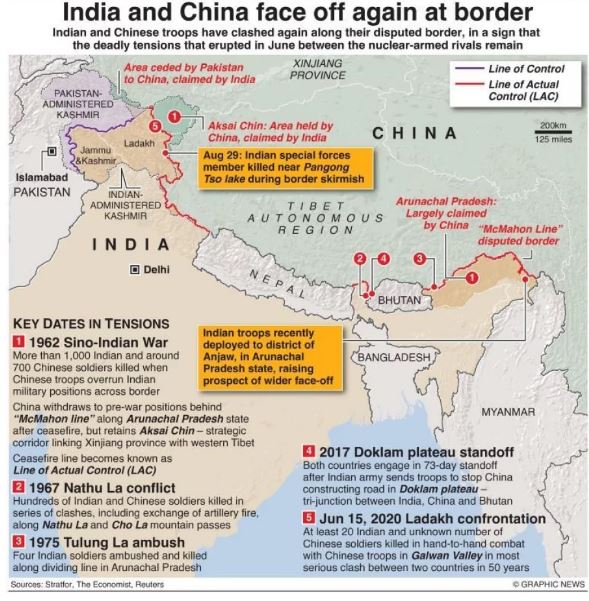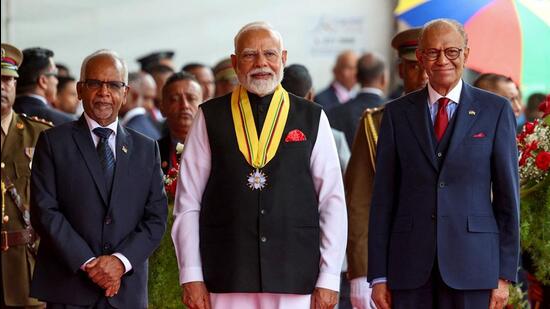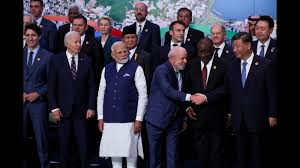Governor’s Assent and Supreme Court’s Landmark Judgment
- 10 Apr 2025
In News:
In a landmark judgment in The State of Tamil Nadu v. The Governor of Tamil Nadu & Anr., the Supreme Court of India decisively addressed the issue of Governors withholding assent to state bills without justification or within a reasonable time.
The case arose after the Tamil Nadu Governor delayed or reserved for the President’s consideration 10 re-enacted Bills passed by the State Assembly, prompting the State Government to move the Court. The Supreme Court declared such delays unconstitutional and laid down a time-bound framework for gubernatorial assent, thereby reinforcing the federal fabric and legislative autonomy of states.
Constitutional Framework and Issues
Under Article 200, when a Bill is presented to the Governor after being passed by the State Legislature, the Governor has four options: grant assent, withhold assent, return the Bill (except money Bills), or reserve it for the President. However, the proviso to Article 200 mandates that once a Bill is re-passed by the Legislature, the Governor “shall not withhold assent.” Article 163 requires the Governor to act on the aid and advice of the Council of Ministers (CoM), except in limited discretionary matters.
The crux of the problem lies in the absence of any timeline in Article 200, enabling some Governors to indefinitely delay or withhold assent—often termed a “pocket veto.” Such delays, especially in opposition-ruled states, have sparked accusations of political misuse and erosion of democratic norms. Tamil Nadu, Kerala, Punjab, and Telangana have faced similar issues, resulting in constitutional gridlock and litigation.
Key Observations of the Supreme Court
In its verdict, the Supreme Court declared that:
- The Governor's delay in granting assent or reserving re-passed Bills is illegal and violates constitutional provisions.
- The ten re-enacted Bills in Tamil Nadu are deemed to have received assent under Article 142, which empowers the Court to ensure "complete justice."
- The Governor has no discretion to reserve or withhold assent once a Bill is re-passed by the Assembly unless its content has materially changed.
- Indefinite inaction by the Governor amounts to a subversion of democracy and disrespect to the will of the people.
Time-bound Guidelines Laid Down
For the first time, the Court laid down clear timelines:
- 1 month to act (assent/reserve) on the aid and advice of CoM.
- 3 months to return a Bill if withholding assent without CoM's advice.
- 1 month to assent to a Bill re-passed by the legislature.
- 3 months maximum to reserve a Bill for the President, with justification.
Failure to comply renders the Governor’s inaction subject to judicial review, introducing a mechanism of constitutional accountability.
Significance for Federalism and Governance
The judgment is a milestone in reaffirming cooperative federalism, ending the misuse of gubernatorial discretion to obstruct state legislation. It upholds the supremacy of the elected legislature and enforces the constitutional principle that Governors are not political actors but facilitators of governance. It also ensures that democratic processes cannot be sabotaged by unelected constitutional functionaries.
Conclusion
By reinforcing time-bound gubernatorial actions and curbing arbitrary delays, the Supreme Court has safeguarded India’s constitutional architecture. As Dr. B.R. Ambedkar had warned, the effectiveness of the Constitution depends on its implementers. This verdict echoes that caution, ensuring that constitutional morality prevails over partisan politics.
India-China Relations at 75: Navigating the Dragon-Elephant Tango

- 04 Apr 2025
In News:
On April 1, 2025, India and China marked the 75th anniversary of diplomatic relations with the exchange of congratulatory messages between President DroupadiMurmu and President Xi Jinping. Both leaders emphasized the need to deepen cooperation, manage differences strategically, and work jointly for regional and global stability. Xi referred to the bilateral relationship as a “Dragon-Elephant Tango,” symbolizing coordinated progress between two Asian giants.
Significance of the 75th Anniversary
The commemoration marks a diplomatic milestone for two ancient civilizations and modern emerging powers, both key members of the Global South. It offers a timely opportunity to recalibrate relations, especially after recent tensions such as the 2020 Galwan Valley clash. Xi called for enhanced “strategic mutual trust” and deeper coordination on global affairs, reflecting a shared responsibility in shaping the international order.
President Murmu and PM Modi stressed multipolarity, stability, and peaceful coexistence. Notably, over 70,000 visas were issued to Indians in early 2025, indicating a revival in people-to-people exchanges. Talks in March 2025 focused on border management and resumption of cultural and religious exchanges, including the Kailash Mansarovar Yatra.
Historical Overview
India was the first non-socialist country to recognize the People’s Republic of China in 1950. The 1954 Panchsheel Agreement promoted peaceful coexistence. However, the 1962 war over the unresolved border disputes—especially in Ladakh and Arunachal Pradesh—remains a lasting legacy of mistrust.
Ties normalized in the 1980s, with Rajiv Gandhi’s 1988 visit paving the way for diplomatic mechanisms like the Special Representatives (SR) dialogue and Working Mechanism for Consultation and Coordination (WMCC). The 2000s saw robust economic engagement, with bilateral trade reaching $138.5 billion by 2024. Both nations became pivotal members of BRICS, SCO, and G20.
Areas of Cooperation
- Multilateral Platforms: India and China coordinate in BRICS, SCO, and on Global South agendas, especially climate finance and equitable development.
- Economic Ties: Despite border frictions, trade remains resilient. China is India’s largest trading partner.
- Cultural Diplomacy: Student exchanges, art exhibitions, and religious pilgrimages continue.
- Public Diplomacy: Diplomatic dialogues, resumed air links, and cooperation on trans-border rivers underscore confidence-building efforts.
Points of Divergence
- Border Dispute: The Line of Actual Control (LAC) remains contentious, especially post-Galwan 2020.
- Strategic Mistrust: China’s ties with Pakistan and presence in the Indian Ocean, as well as its Belt and Road Initiative (excluding India), fuel rivalry.
- Trade Imbalance: India’s import-heavy trade with China leads to a significant deficit.
- Perception Gap: India’s push for strategic autonomy contrasts with China’s assertive regional posturing.
Way Forward
- Strengthen Strategic Dialogue: Revive and regularize SR-level border talks and WMCC meetings.
- Rebuild Trust: Encourage military confidence-building measures and cooperative ventures in non-sensitive areas.
- Balance Trade: Promote diversification and attract Chinese investments aligned with India’s interests.
- Enhance People-to-People Ties: Facilitate educational, cultural, and tourism exchanges.
- Promote Multilateralism: Collaborate on global issues such as climate change, health security, and WTO reforms.
Conclusion
India-China relations remain a blend of cooperation and contestation. The 75th anniversary provides an inflection point to transcend border hostilities and engage in constructive diplomacy. A balanced and long-term perspective, as advocated by both nations, can shift the narrative from conflict to coordinated coexistence—true to the spirit of the “Dragon-Elephant Tango.”
Maternity Leave as a Constitutional and Reproductive Right

- 25 May 2025
Background:
In a landmark ruling in K. Umadevi v. Government of Tamil Nadu (May 2025), the Supreme Court (SC) affirmed that maternity leave is not merely a welfare measure but a constitutional and reproductive right of women. Setting aside the Madras High Court’s judgment, the apex court extended maternity benefits to a government school teacher for her third child, rejecting the Tamil Nadu government's policy that restricts such benefits to only the first two children.
Background of the Case:
The petitioner, a teacher employed in a Tamil Nadu government school, was denied maternity leave for her third biological child, citing Fundamental Rule 101(a) which limits benefits to women with fewer than two surviving children. Notably, the child in question was from her second marriage, while the earlier two children were in the custody of her former husband and born before her employment. The single bench of the High Court had ruled in her favour, finding the state rule inconsistent with the Maternity Benefit Act, 1961 and invalid under Article 254 (repugnancy with central law). However, a division bench reversed this decision, prompting an appeal to the SC.
Key Observations by the Supreme Court:
- Maternity leave is integral to a woman’s reproductive autonomy and thus protected under Article 21 of the Constitution, which ensures personal liberty.
- It is also aligned with Directive Principles of State Policy (Article 42) that mandate the state to ensure humane work conditions and maternity relief.
- The SC emphasized that reproductive rights are recognized under international human rights law, including the rights to health, privacy, dignity, equality, and non-discrimination (as per the Universal Declaration of Human Rights).
- The Court clarified that population control, though a valid public policy goal, cannot override the constitutional guarantee of reproductive choice and health.
Reaffirming the Maternity Benefit Act, 1961 (Amended 2017):
- The Act applies to workplaces with 10 or more employees, including both public and private sectors.
- Provides 26 weeks of paid maternity leave for women with fewer than two surviving children, and 12 weeks for the third or subsequent child.
- Also covers adoptive and commissioning mothers with 12 weeks of leave.
- Ensures job security, access to crèche facilities in establishments with 50+ employees, and promotes work-from-home options during or after pregnancy.
Significance of the Judgment:
- The verdict ensures gender equity in the workforce by reinforcing women’s right to combine motherhood with professional aspirations.
- It highlights the need to harmonize state policies with central welfare legislation and constitutional mandates.
- It reflects the Court's broader jurisprudence, such as in Suchita Srivastava v. Chandigarh Administration, which had affirmed a woman’s reproductive choices as part of her autonomy.
Implications for Policy and Governance:
This judgment strengthens women’s workforce participation by addressing a key dropout point—childbirth. It serves as a precedent for inclusive, rights-based policy design and calls for reviewing restrictive service rules across states. It aligns with India's commitments under international human rights frameworks and the Sustainable Development Goals (SDG 5: Gender Equality).
In conclusion, the Supreme Court’s verdict elevates maternity leave to a constitutionally protected right, advancing both social justice and women’s empowerment in India’s democratic framework.
India–Mauritius Enhanced Strategic Partnership

- 15 Mar 2025
In News:
India and Mauritius have elevated their bilateral relationship to an Enhanced Strategic Partnership, underscoring deep-rooted historical ties, shared cultural linkages, and growing strategic alignment in the Indian Ocean Region (IOR). This elevation came during Prime Minister Narendra Modi’s visit to Mauritius in March 2025, marking a new phase in India’s engagement with the Global South through the unveiling of the MAHASAGAR Vision—Mutual and Holistic Advancement for Security and Growth Across Regions.
Key Agreements and Strategic Cooperation
A total of eight bilateral agreements were signed, focusing on trade, defense, maritime security, financial crimes, and developmental cooperation. A landmark agreement was the signing of India’s first-ever rupee-denominated Line of Credit to Mauritius, worth ?487.6 crore, aimed at upgrading the island’s water supply system. This also complements a broader move toward trade settlement in local currencies, reducing dependence on foreign exchange and enhancing resilience in bilateral commerce.
In the realm of maritime security, the partnership now includes expanded white shipping information sharing, enhanced joint maritime surveillance, and greater utilization of strategic facilities on Agalega Island, developed with Indian assistance. India reaffirmed its commitment to safeguarding Mauritius’s Exclusive Economic Zone (EEZ) and supporting the establishment of a police academy and a national maritime information-sharing centre.
India also extended support to Mauritius’s claim over the Chagos Archipelago, opposing colonial remnants and reinforcing its consistent stance on sovereignty and decolonization in global forums.
MAHASAGAR Vision and Global South Outreach
The newly unveiled MAHASAGAR initiative builds upon India’s earlier SAGAR doctrine, broadening the framework to include developmental cooperation, technology transfer, capacity building, concessional finance, and joint security across the Global South. It strengthens India’s position as a net security provider and first responder in the IOR, evident from its assistance during Cyclone Chido and the Wakashio oil spill.
The visit also witnessed the inauguration of the Atal Bihari Vajpayee Institute of Public Service and Innovation, a health centre, and 20 community projects built with Indian grants. Further, India announced its support for constructing a new Parliament building in Mauritius, symbolizing democratic solidarity.
Cultural and Economic Pillars
Mauritius hosts a large Indian diaspora (around 70% of its population), maintaining strong cultural, religious, and linguistic ties with India. Historical bonds, such as Mahatma Gandhi’s 1901 visit, continue to influence people-to-people relations. Economically, Mauritius serves as a gateway to Africa, benefiting from India’s rising trade and investment footprint, particularly through the African Continental Free Trade Area (AfCFTA).
India is one of Mauritius’s top trading partners and a major source of Foreign Direct Investment (FDI), with Mauritius being the second-largest source of FDI into India in FY 2023–24.
Conclusion
The India–Mauritius partnership exemplifies a holistic model of South-South cooperation, driven by shared values, strategic convergence, and mutual development. In the evolving Indo-Pacific framework, it reinforces India's Act East and Extended Neighbourhood policies while bolstering regional stability and economic integration.
How Minilateralism is Reshaping Global Order

- 09 Dec 2024
Introduction
Minilateralism refers to the growing trend of smaller, more focused international groupings of countries that cooperate on specific issues or regional challenges. It contrasts with the traditional multilateral frameworks, which are often large, slow-moving, and bogged down by lengthy debates and consensus-building. Today, minilateral platforms are increasingly driving global decision-making and shaping the future of international relations.
Rise of Minilateralism
Failure of Multilateralism
- Multilateralism's Decline: Traditional multilateral institutions like the United Nations (UN) are increasingly seen as ineffective due to their bureaucratic nature and the challenges in building consensus among a large number of diverse nations.
- Global Challenges: Emerging global issues, such as climate change, terrorism, and cybersecurity, require faster and more effective responses. The inability of multilateral platforms to address these challenges efficiently has led to a preference for smaller, more agile groupings.
Emergence of New Powers
- Multipolar World: The rise of new powers such as China, India, and Brazil has contributed to the formation of minilateral groupings. These rising powers desire a greater role in global governance but may not yet have the ability or desire to reshape the international order through large, cumbersome institutions.
- Minilateralism as "Multipolarity Lite": Minilateralism allows these countries to assert themselves as regional or global poles without the need for the complexities of full-scale multilateralism.
India's Role in Minilateralism
Strategic Positioning
- Geopolitical Context: India’s strategic location in South Asia, its status as part of the Global South, and its proximity to a rising China have all influenced its approach to minilateralism. India’s multi-aligned approach reflects its desire for flexibility in navigating the complex and shifting global geopolitical landscape.
- Diverse Partnerships: India is a key player in various minilateral arrangements, balancing its relationships with both traditional Western powers and rising Eastern nations, often serving as a bridge between competing geopolitical interests.
Minilateralism as a Solution
- Diversification Over Alignment: India's preference for minilateralism stems from the desire to avoid over-reliance on any single bloc or country. By engaging in multiple minilateral platforms, India seeks to hedge its interests, balancing its strategic objectives between competing global forces.
The Role of Minilateral Forums
Decision-making and Action
- Faster Action: Minilateral groupings facilitate quicker decision-making by bringing together like-minded countries to focus on specific issues, allowing for more decisive action than traditional multilateral bodies.
- Conflict Resolution: While minilateral platforms may not directly resolve conflicts, they offer indirect pathways for addressing geopolitical tensions by fostering dialogue and cooperation among countries with divergent interests.
Examples of Minilateral Groupings
- BRICS: The grouping of Brazil, Russia, India, China, and South Africa is an example of a minilateral arrangement where emerging powers cooperate on shared economic and political interests.
- Quad: The Quadrilateral Security Dialogue (comprising the United States, India, Japan, and Australia) is a prominent example of minilateralism focused on regional security, particularly in the Indo-Pacific region.
- Other Regional Groupings: Minilateralism also manifests in regional arrangements such as the ASEAN-led East Asia Summit or the India-Japan-Australia trilateral forum, each addressing specific regional and global concerns.
Conclusion
Shaping the Future of Global Order
Minilateralism is reshaping the international order by fostering closer, more flexible cooperation between countries on a wide range of issues. As multilateralism faces growing challenges, smaller, more focused partnerships offer a faster and more efficient means of addressing global problems. India's pivotal role in these groupings reflects its desire to navigate a complex geopolitical landscape while maintaining strategic autonomy. The rise of minilateralism marks a significant shift in global governance, one that could define the future of international relations.
